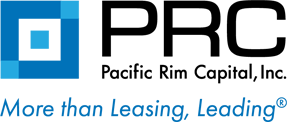When evaluating your options for financing equipment, we recommend asking potential lessors whether they are a principal or a broker.
Each business model contains different risks when it comes to financing.
As your deal life cycle for your Material Handling Equipment (MHE) lease begins, you will notice that there are a few differentiating factors that stand out between working with a broker or a principal for financing.
These areas tend to include:
- Flexibility in Price
- Asset Management and Customer Service
- End of Lease Options
Each of these areas will have a significant effect on how your lease will be financed and assets will be managed throughout the lease term. By taking the time to find out which financier will offer your company the most benefits, you will be able to choose whether a broker or a principal is the best choice for you.
So, how does the difference in business model affect the Lessee over the course of a lease?
Lease Terms and Vested Interest
Most lessees choose their leasing partner based on the lowest monthly payment. But just because your leasing partner provides the lowest monthly payment does not mean your leasing partner is the cheapest option.
Broker
A broker generates a lease on behalf of another. They intend to sell the lease and transfer any obligation to you immediately. They also will usually make a commission on each transaction. Because of this, your lease transaction will not be between you and a broker. It will ultimately be between the bank who finances the lease and the broker.
When a broker works to develop the terms of the lease, their pricing is limited by the flexibility of their lender. They do not have a vested interest either the lease or your business relationship. They will work with their list of banks to determine who can offer the best rate so they can close the transaction.
Principal
Unlike a broker, a Principal invests its own capital in every transaction. They have a vested interest in the performance of the lease – just like the customer. Therefore, a principal’s interest aligns with the needs of your business.
Principal will be able to be more flexible and provide customized solutions for their clients. Since they are taking a financial position in every transaction, the principal will be able to ascertain how much risk they are willing to take.
The principal also has a list of preferred lending sources they work with to get competitive rates for their customers. While their rates may vary compared to a broker, a principal will be working during your entire lease to get you the lowest total cost of ownership instead of merely the lowest rate.
Asset Management and Customer Service
After you finished negotiations and signed the paperwork, you may think that’s all you need to do. After all, you already agreed to your payments and other terms – what else could there be?
However, this is another area where you will notice a large difference between a broker and a principal when it comes to the communication and management during your lease.
Broker
Since a broker sells a transaction as quickly as possible, they will have no right to provide solutions to help you manage your leased assets. All communication will be handled by the bank who purchased your lease from the broker – if you even know who that is.
A bank is solely interested in receiving money on time. The only time a lessee would hear from a bank is when payments have stopped. Because of this, the customer is essentially left on their own.
Principal
A principal, on the other hand, will maintain communication and directly assist with lease management throughout the term of the agreement.
Principals, like Pacific Rim Capital, Inc. will advise clients on the best way to manage their assets during the lease and customers maximize the return on their investment. Pacific Rim Capital, Inc. also makes invoicing, payments, and other administrative tasks flexible and easy to manage, which creates a positive experience for clients throughout the entire lease.
End of Lease Options
The broker/principal business model also affects decision-making at the end of term. At the end of a lease, a Lessee must decide to return, renew, or purchase their leased asset.
So, what is the difference between how a broker and a principal handles a lease at the end of term?
Broker
Since a broker does not maintain a vested interest in the lease transaction, they will usually be long gone when the lease matures. Therefore, if a customer is not actively managing their leases and do not inform the bank of their decision, they lose money at the end of term.
Most often, these consequences are the rent extending on a month-to-month basis, which could lead to the customer spending more money on the back end, despite realizing some cost-savings on the front-end.
For this reason, lessees and prospective lessees should be wary of unscrupulous business practices that cause costs to spike at the end of term, such as automatically renewing leases.
Principal
A principal has a vested interest in the performance of your lease transaction. As a dedicated point of contact, a principal will likely remain in contact with you through the entire lease term. This helps customers make better decisions about end of lease options and identify cost-saving opportunities.
Be wary: not all principals are committed to providing transparency and excellent customer service like Pacific Rim Capital, Inc. For example, at Pacific Rim Capital, Inc., we work with our customers to determine what the best choice is based on a number of criteria, including the asset’s economic useful life.
With nearly 30 years’ experience, Pacific Rim Capital Inc. can provide expert advice and creative solutions to help you maximize your ROI on any leased asset.
Conclusion
Principals and brokers have different business models and different objectives. These differences affect the customer relationship and the management of assets throughout the lease term. When selecting an equipment finance partner, be sure to research every potential partner carefully to determine the best fit for your organization.

